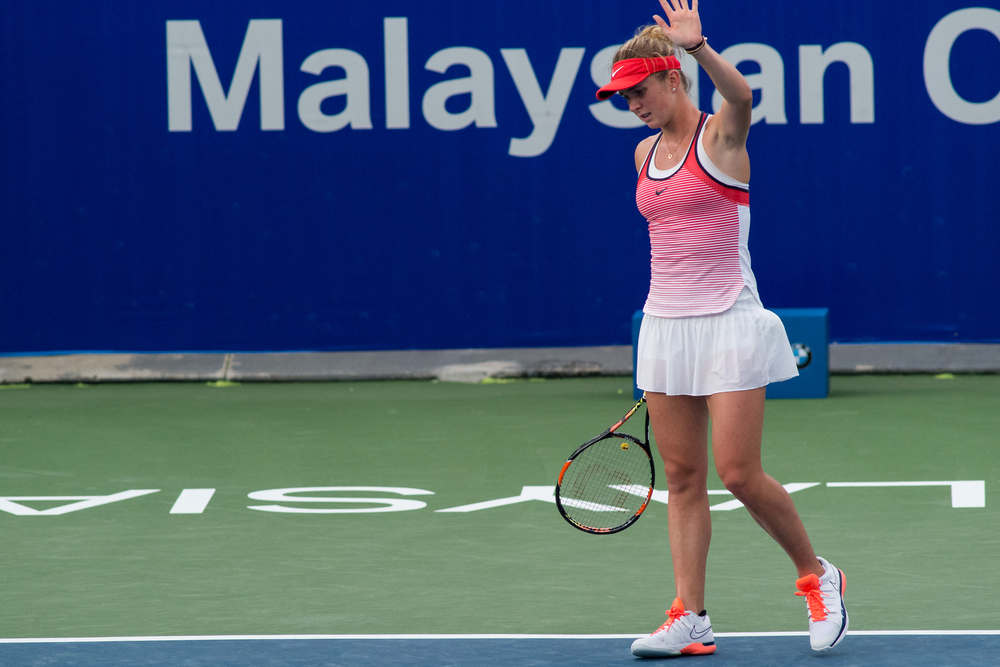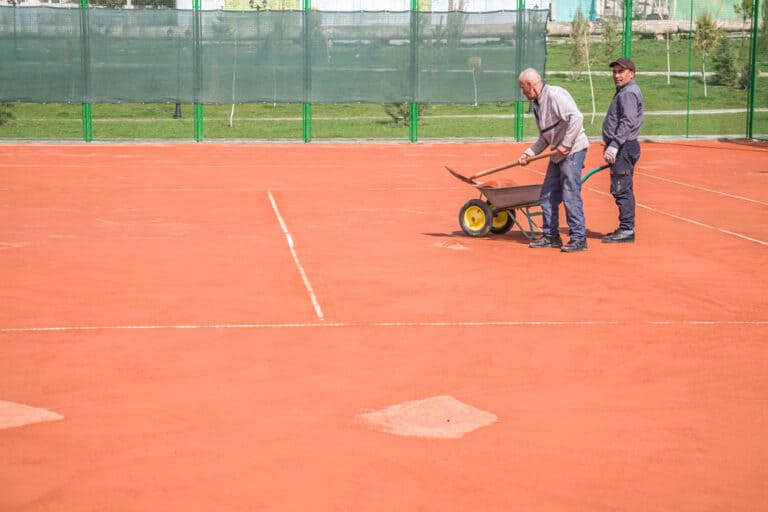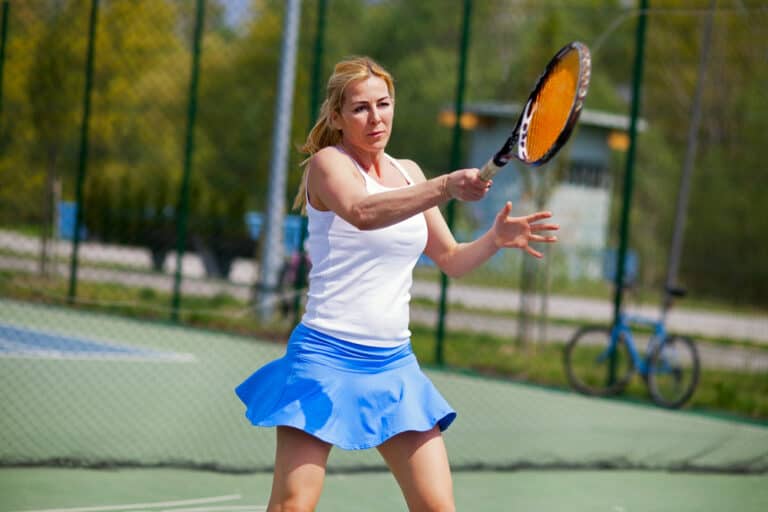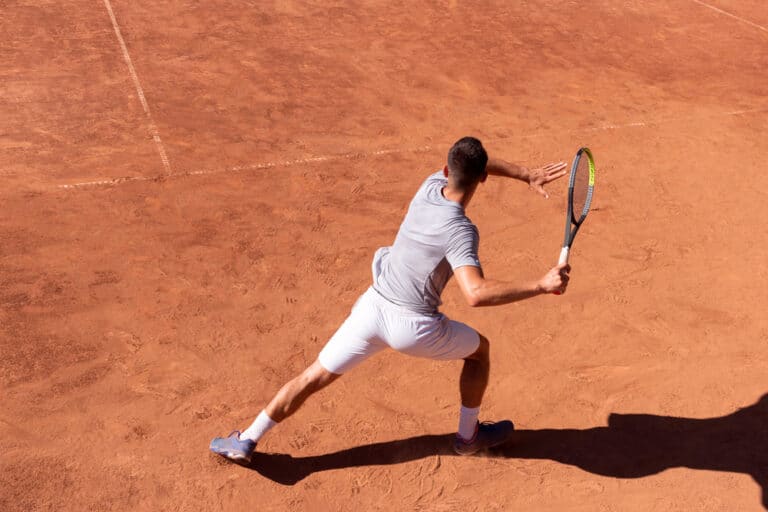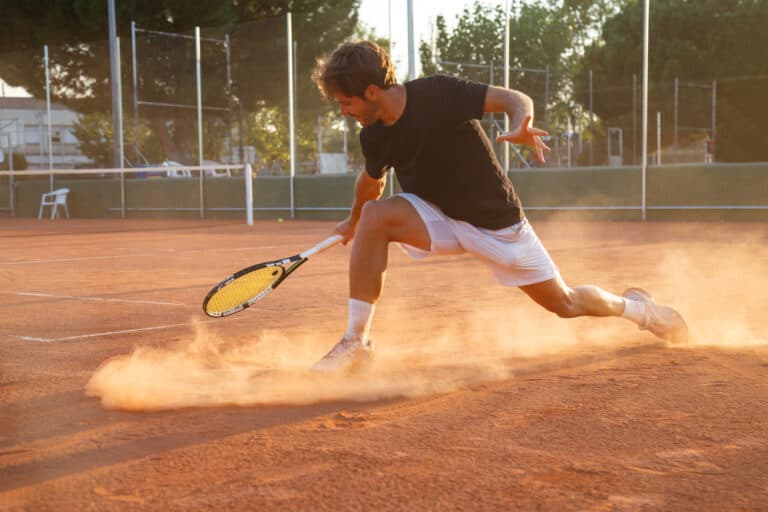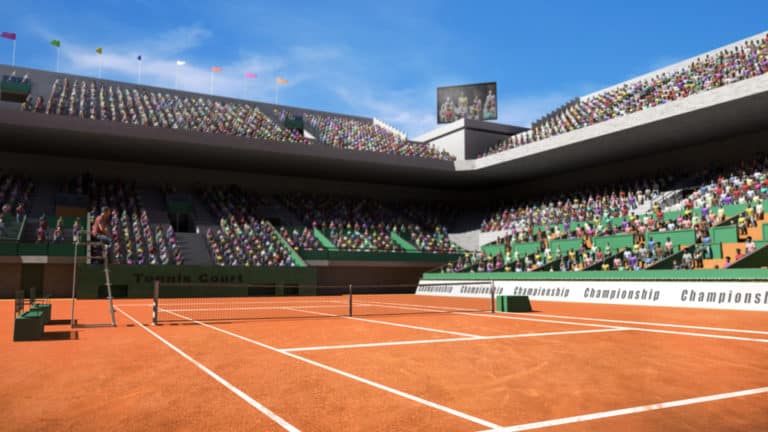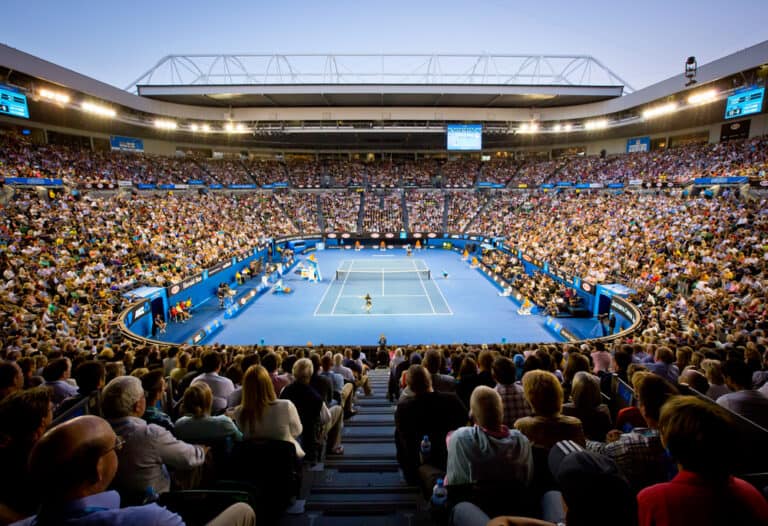Why Do Tennis Players Raise Their Hand?
Editorial credit: Mai Groves / Shutterstock.com
When watching tennis matches on both the women’s and men’s professional tours, I often see players raise their hands. Sometimes the hand raise is what appears to be an apologetic gesture while other times it appears to be more challenging. So I set about learning all the times when players can and do raise their hands during a game.
Players raise a hand as a respectful apology if they play a lucky shot that clips the net cord and lands where the opponent cannot reach the ball, winning the point. Players also raise a hand to challenge a line call that has gone against them.
Let’s take a closer look into all of the instances when a player will raise their hand during a tennis game.
Why Do Tennis Players Raise Their Hands When The Ball Hits The Net?
Nearly every time a player hits a lucky net cord and the ball drops in for a winner, they raise an apologetic hand. It is usually a slight wave or raising of their racket to acknowledge that it was a free point that they won through sheer luck at their opponent’s expense.
The same applies if the ball comes off the racket’s frame at an unexpected angle, yet still lands in for a winner. It is a shot that could have landed anywhere and the winner was just lucky.
It must be noted that if a player gets a lucky net cord but the point continues with a longer rally then the lucky player often won’t apologize for the lucky shot as it did not impact the outcome of the point. Players will certainly not apologize while the point is still being played.
Why Do Tennis Players Apologize To Their Opponent After Getting A Lucky Net Cord?
Tennis etiquette is based on the basis of fair play. For example, if you get a lucky net cord and win the point you have denied your opponent a fair play opportunity of getting to the ball. The point will stay on the scoreboard in your favor and cannot be overturned.
In this instance, the etiquette of fair play dictates that the correct thing to do is to raise your hand as a gesture of apology. It shows respect for your opponent who was fighting just as hard as you to win the point.
Is Hitting The Ball Exactly On The Edge Of The Net A Skill That Should Be Apologized For?
Hitting the ball exactly on the edge of the net is not a skill that players train for. Ideally, you will want about a foot or more of clearance when the ball goes over the net. That way, even if you don’t hit the ball perfectly it will still carry over the net to your opponent.
Even if you do hit the net cord, there is still only a 50% chance that the ball will be able to pop up and carry over the net. Why train for a shot that only has a 50% success rate based on nothing else but luck?
If your shot has clipped the net and has not somehow dropped into a spot winning you the point but rather carries to where your opponent can play the ball, it will land softly and give your opponent the chance to play an aggressive shot and you will likely lose the point. Yet another reason why players don’t train this as a shot they want to play.
Should You Apologize For Hitting The Net
It is considered good etiquette to apologize for getting a lucky shot going in after clipping the net cord because you scored an accidental point. It is certainly a lot better than jumping into the air with a fist pump to celebrate winning a point that has nothing at all to do with your skill as a tennis player.
Are Players Really Sorry For Hitting The Net And Winning The Point
In the world of competitive professional tennis, players aren’t truly sorry when they apologize after hitting a lucky net cord. They feel happy that this time they were on the good side of some random luck.
At the same time, each professional player has a personal brand that has brand value. They receive sponsorships and endorsement deals based on their brand value. Players will be aware of their brand value and will avoid anything that will negatively impact their brand value because that has a direct correlation to their future earnings prospects.
At the end of every point during a tournament game of tennis, there will be a television camera that will be focused on the winner of the point irrespective of whether it was a phenomenal shot or pure luck. If it was a phenomenal shot, the audience will expect to see a celebration with fist pumps.
However, if a point was won due to good luck, at the expense of an opponent, a fist pump will look out of place and negatively impact the brand value of that player. Therefore, a hand gesture by way of an apology will be a better option for the player and help protect the integrity of their personal brand.

Is There A Penalty For Hitting The Net In Tennis?
There is no specific penalty for clipping the net cord, no matter how often during the match you do it. However, a lot depends on what happens to the ball after it has clipped the net cord as a ball clipping the net cord only has a 50% chance of being in.
Should the ball land out after clipping the net, or pop up and then fail to clear the net the point will be lost.
If the ball clips the net but lands in when you play a service, the service will be called a let and you take the service again. There is no limit to the number of service “lets” you can have without penalty beyond the risk of the ball landing out after clipping the net cord.
If the ball clips the net during normal play and lands in it is a legal tennis shot. If your opponent doesn’t reach the ball you win the “lucky” point and it is courteous to raise a hand by way of apology for the bad luck that befell your opponent. If your opponent does return the shot that clipped the net cord then play continues normally for that point in the same way it would after any other legal tennis shot.
How Do Tennis Players Challenge A Line Call?
If a player wants to challenge a line call that has gone against them, they will raise their hand to stop play and make the challenge.
Because line call challenges disrupt the flow of the game, players are limited to the number of unsuccessful challenges they can make. Players are allowed 2 challenges per set.
If a challenge is successful the line call will be changed in their favor, usually meaning that they will win the point. In addition, the player will retain that challenge to use in a future disputed line call. Players can make an unlimited number of successful line call challenges.
If the challenge is unsuccessful, then one of their allocated challenges is lost. Therefore, players only challenge line calls when they are certain that an incorrect line call has been made against them.
There is one additional instance that is similar to challenging a line call. It happened in London at the 2018 ATP finals in a game between Alexander Zverev and Roger Federer. Zverev was 3-4 down in the tiebreak when a ball boy dropped the ball, and it rolled toward the court within Zverev’s field of vision. Zverev immediately raised his hand to stop the point, and the umpire correctly called a let, and the point was repeated.
Zverev then served an ace to level the tiebreak at 4-4 before winning the match. Unfortunately, the crowd booed Zverev off the court after the match even though what he did was correct under the rules of tennis. Later, in a press conference, Roger Federer backed up the decision that Zverev had made as correct.

